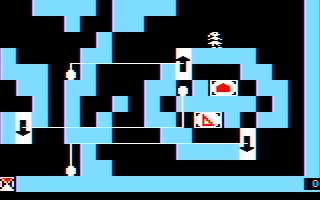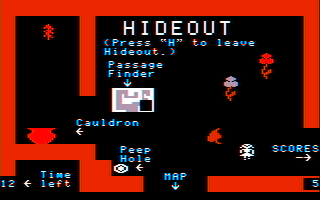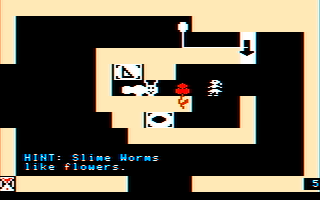Think Quick!
Game Review
Game: Think Quick!
Rating: A-
When personal computers first came into being, manufacturers were looking for all sorts of uses so they could pitch to consumers why they might want to plunk down a serious amount of cash for one of these boxes. While technology enthusiasts and video game fans might have immediately seen a use, strange as it sounds it wasn't always clear to the layman what exactly they would do with their new, expensive gadget. It didn't take long for education to be thrown into the mix of what you could use your new fangled computer for with sky-high promises to revolutionize the learning experience! I don't think many (if any) early educational games really lived up to the hype; usually they fell into two categories, fun to play but without much educational value or a decent educational experience but about as fun as your average math exam. Maybe I shouldn't fault the developers too much, the genre concept was new at the time and the delicate balancing act of both educational and fun isn't easy even today (I guess there aren't many ways you can spruce up some topics, such as math). Even still, most early programs are quite poor and really no different than a set of exercises, but on a computer.
While many early programs were essentially nothing more than a set of computerized drills and practice sets, things did improve at least somewhat as the 80's progressed and a few companies realized there was so much more computers could do. Many of Tom Snyder Productions educational games are well remembered for being fun for moving beyond simple exercises so they would actually be something children wanted to play. Of course, the Carmen Sandiego Series and The Oregon Trail are legendary in their own right. But for now let's take a look at Think Quick! from The Learning Company; released in 1987, this one seems to have mostly fallen into obscurity which is unfortunate as I think it's particularly good as far as the “edu-tainment” genre goes.

The logic and reasoning part of the game comes into play not by having to walk through a maze, but both by having to open and close doors for reaching the puzzle pieces and by determining which puzzle pieces are needed. The doors can slide open or closed to allow access to a path; in many cases it's possible that moving a door from one position will cause it to clear a path while simultaneously blocking another. Additionally, the buttons to move the doors are usually not nearby and themselves may be blocked by one of the doors. Escpecially on more difficult castles, reaching a particular puzzle piece may involve a long sequence of moving doors into the correct position to reach a button, then moving them into another position to proceed further, and so on. This set of obstacles can span several screens sometimes to add to the challenge. The puzzle pieces themselves are also a simple logic puzzle; the color and shape needs to be looked at to determine if a piece that is found matches a given pattern; if it doesn't, it should be left alone as picking up a wrong piece will cost some valuable time and bonus points! The puzzles are overall pretty clever and the gradual increase in difficulty makes for a fun challenge. To make the program more game-like, there are slime worms wandering the castle which add a fun action element and can really cause trouble if you're starting to get low on time. In more difficult castles the worms move much faster so you'll need to be careful and creative with how you use flowers provided which put the worms to sleep.

One downside is the simplistic graphics and sound. For the PC version things overall look decent enough (especially with a composite monitor) and the PC speaker sound is pretty much par for course for that hardware, but I thought there was an opportunity for the game to have slightly better color in the PC version. It's unfortunate that this version didn't add EGA and/or Tandy graphics to the list of supported video cards in addition to CGA and Hercules. Even making better use of the available CGA palettes on both RGB and composite monitors would have been nice. The Apple II version utilizes the system's Hi-Res graphics as was common at the time and looks more or less the same as the PC version. It was also released in a package that was marked as for the Apple IIgs on the sticker, however it really wasn't any different than the usual Apple II release - it was simply the same 8-bit Apple II program that was shipped on a 3.5" disk instead of a 5.25" disk. While this ran fine on a IIgs, it didn't take advantage of the IIgs' more advanced graphics and sound (in theory, it may have also worked on a IIc or a IIe equipped with 3.5" drives). Oh well; gameplay certainly isn't impacted by the color and graphics choices the game does use, so it's not a deal breaker, but even in 1987 the graphics weren't anything notable.
